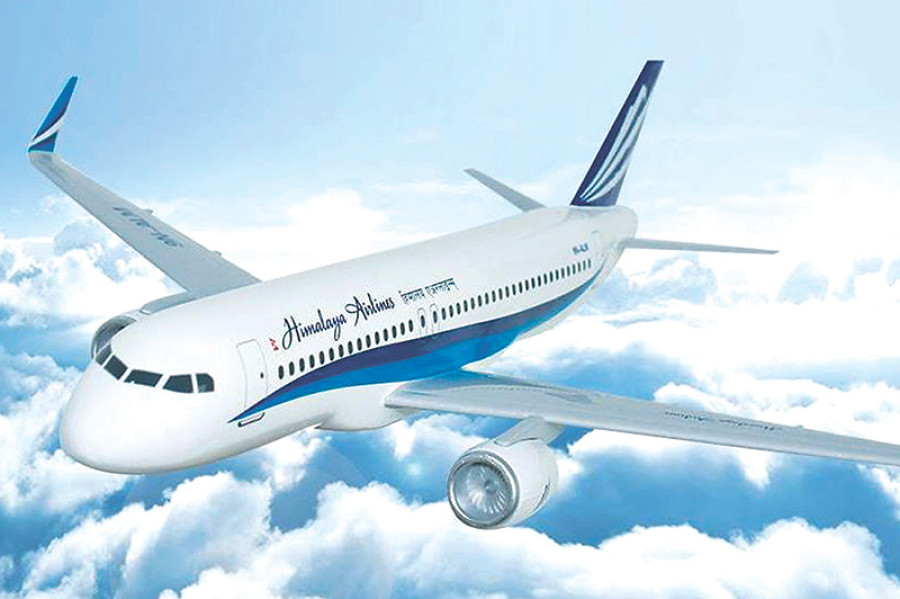Opinion
Camel’s nose under the tent
For the first time in history, Nepal Airlines (RA) (referred to by its flight code) is on a par with another Nepal based aviation company when it comes to the number of aircrafts in its fleet.
For the first time in history, Nepal Airlines (RA) (referred to by its flight code) is on a par with another Nepal based aviation company when it comes to the number of aircrafts in its fleet. The Himalaya Airlines (HA), a Nepal-China joint venture, has not just blabbered, but actually landed its third A320. It reads somewhat like the score in an ongoing English Premier League match: RA3:3HA. No one can be sure about the eventual outcome, given various uncertainties associated with both airlines. RA, having bitten off more than it could possibly chew, had been stagnating for long. It did not give sufficient thought to timely hardware upgrades either. HA, on the other hand, has made an entry with vigour, trying to encroach upon RA’s domain.
It has been said many times before that unreliability is the biggest issue bedevilling RA. People fly for some particular reason, mostly for keeping all sorts of appointments. When flights get cancelled or rescheduled, programmes that had been carefully set go horrendously haywire. It is understandable that machines have occasional issues, but the inability to fill such gaps seamlessly adds to the disgust that eventually turns into all-time distrust. Trust is paramount for any business, but more so for aviation. RA’s rivals, offering better connectivity, are literally stealing passengers from under its nose.
Private vs public
Even A320s, which are relatively new, have had unscheduled groundings due to external factors. It had two known cases of body denting, possibly due to impact by a service vehicle and pebble catapulted at high velocity. The more serious one this March was attributed to a bird strike that slightly damaged the right wing slat which needed replacement. Imagine the implication, both for the airline and its passengers, when an aircraft gets grounded for over a week or two. This highlights the inherent risk in running scheduled flights with a small fleet. As regards present fleet strength, RA comes in a little weaker in having to rely on B757, which is on the verge of retirement, and when A320s are disabled. With two A320s, RA is trying to inject some life into the existing network and to make an expansion after it gets the much talked about A330s. But it remains to be seen if RA can really turn over a new leaf.
There is more to it, as RA is government-owned while HA is exclusively private. For that reason alone, HA may not operate on a “level field”. But not being bound by anything other than commercial success, HA, in most likelihood, is assumed to be better placed. Meaning, unlike RA, it will not have to wait for government approval for every board decision. The rejection by the Ministry of Finance of the proposal for a salary increase in RA is just one recent example that exposes its limitations. Additionally, RA has been beset with unseen political and personal interference, especially after the country embarked on the loktantric path.
Ambitious vision
Things do not seem to be going too well for the Himalaya Airlines either. It was rumoured that an influential Nepali banker silently walked out of the majority group even when prominently visible during the signing of an MOU. It is believed that dissatisfaction with the rest of the group, including foreign partners, was the reason.
But generally speaking, most joint ventures prefer a non-Nepali party to have majority shares, who are considered better at managerial and technical knowhow and whose products are assumed to be qualitatively better. But in the case of HA, it is seen to have gone the other way around. Undoubtedly, it is advantageous to be a Nepali majority company so as to get the benefits while using air traffic rights on various routes. It is even speculated that Tibet Airlines was not here for serious business other than siphoning off earnings in the form of rent. Questions have also been raised about the firing of high level technical staff for pointing out the lack seriousness about safety. Things do not seem to be going right with cases of pilots being fired and staff benefits being curtailed.
HA aimed to fly between Kathmandu and Delhi after getting its second aircraft from January. Although the proving flight was conducted on March 30, 2016, it does not have Indian approval even after over a year. Indian authorities are said to be overtly inquisitive about Tibet Airlines, which could be the main reason for the hold-up. India is in no hurry to let another Nepal-based airlines fly the Nepal-India route as it has around half dozen Indian operators flying unhindered against the lone RA. HA currently operates flights to Colombo and Yangon twice a week, to Kuala Lumpur five times a week, and to Doha seven times a week. It needs to have more destinations and higher frequency. It envisages having 15 A320s and even some A330 in five years. This looks very ambitious, but it does not cost anything to have vision.
That Nepal Airlines (RA) is unable to fly various routes but is bent on blocking others is not good for the country. In the given context, the emergence of HA can be taken positively. RA may end up being leaner and more efficient once it gets the feel of a camel’s nose under its tent. It will be better if both avoid flying overlapping routes and make the best use of their fleet, while keeping safety concerns to a minimum.
- Arjyal writes extensively on aviation




 29.12°C Kathmandu
29.12°C Kathmandu









